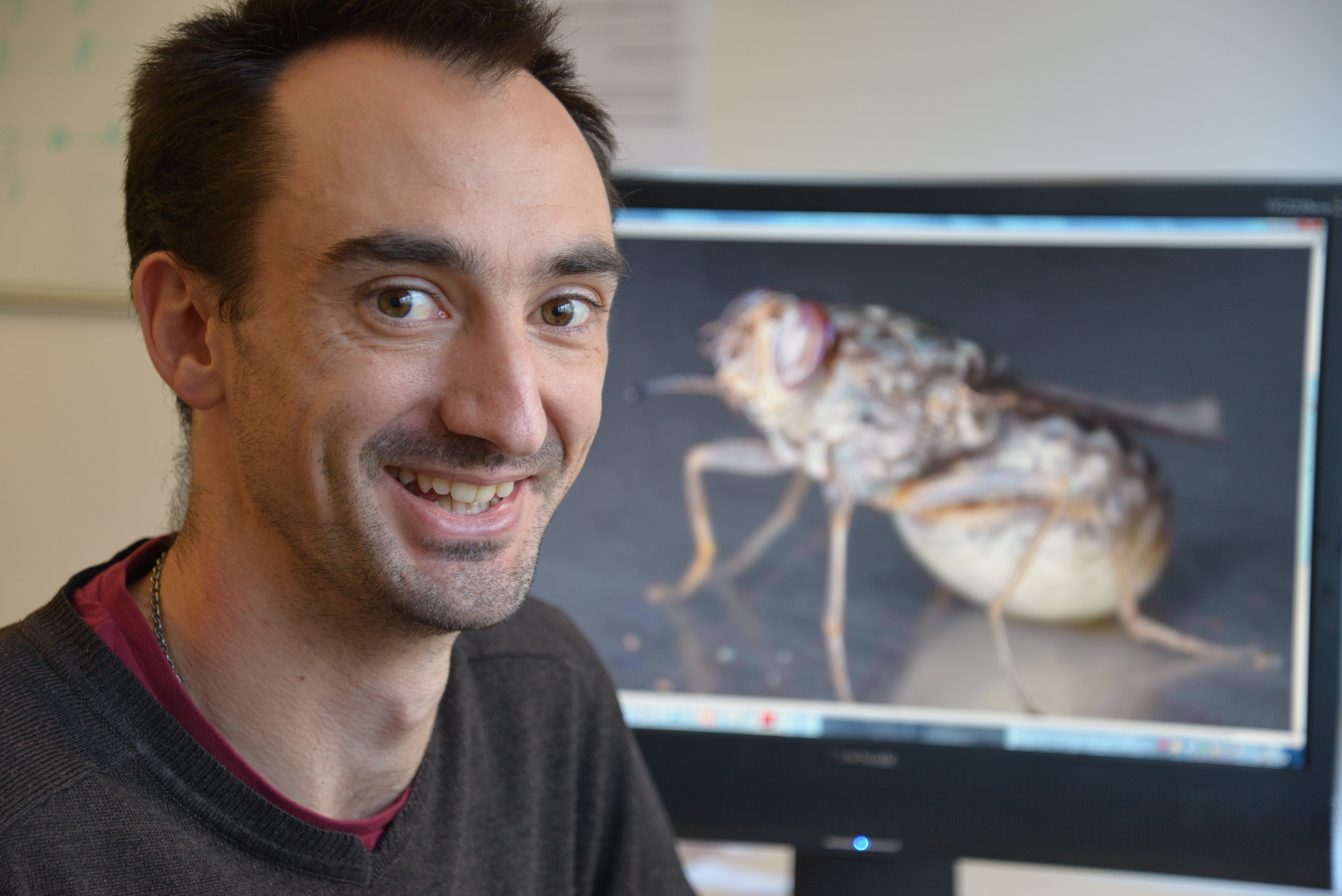Mystery of why blue traps catch flies solved by AI research

Dr Roger Santer, Aberystwyth University
28 June 2023
The traditional method of using blue traps to catch biting flies works because the insects confuse the colour with animals they wish to bite, according to new research led by Aberystwyth University academics.
From tsetse flies to blackflies, for years blue traps have been used to attract and trap biting flies, providing an important tool for the control of fly-borne diseases like sleeping sickness. However, it was not clear why these traps worked.
Scientists had various theories, including that blue surfaces might look to the insects like shaded places to rest, or like animals to bite.
The Aberystwyth University-led team tackled the problem using artificial intelligence, by training artificial neural networks to mimic visual processing in a fly’s brain.
Artificial neural networks are a form of machine learning inspired by the structure of real nervous systems.
Using the same photoreceptor signals as a real fly, these networks learned to detect animals by comparing the signals of blue- and green-sensitive photoreceptors, but detected shade using brightness. They then mistook blue fly traps for animals, suggesting that flies do the same.
Dr Roger Santer from Aberystwyth University’s Department of Life Sciences, who led the study, commented:
“Why biting flies are especially attracted to blue traps has been a real puzzle for researchers. Our idea was that AI could be used to find the best way of identifying natural stimuli using a fly’s photoreceptor signals, and we expected that to resemble the processes going on in a real fly brain. The surprise was that the best mechanisms for identifying animals and shade were completely different. Despite looking nothing like animals from a human point of view, blue traps activated the mechanisms that best identified animals using fly photoreceptor signals.
“If we can understand the mechanisms that attract flies to coloured traps, we can improve the colour of those traps so that they more efficiently catch flies. This is a really important aim because different species of biting flies spread important diseases of humans and animals, so fly control is an important part of disease control.”
The research was published in the journal Proceedings of the Royal Society B.



